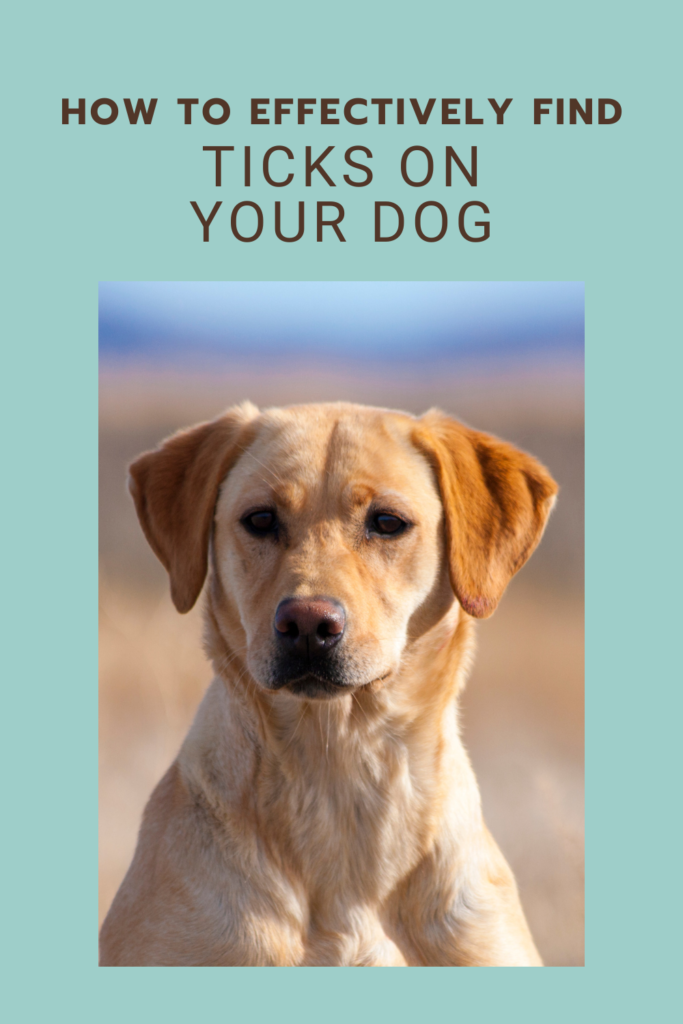Tick season is upon us and rumor has it that it is going to be a bad one. Here's our game plan for efficiently and effectively checking dogs for ticks.
Just a disclaimer, I am not an expert on this matter. I do however have quite a bit of experience checking dogs for ticks. However, it is best to talk to your vet about the best methods for tick prevention.
Although there are a number of different ways to approach tick prevention for dogs, none of them are 100% effective. It's important to also check your dogs over. Typically, tick-borne illnesses are transmitted if the tick has been latched for over 24 hours. If you remove a tick as soon as possible, the odds of your dog falling ill due to a tick bite significantly decrease. Even if you didn’t know your dog had been bitten and/or your dog has been treated for tick prevention, it is still important to be aware of the signs and symptoms of tick-borne illnesses in your dog so that you can get them the proper treatment to recover. Use these tips and tricks to catch ticks early on.

Tick Prevention for Dogs
Where to search
Ticks like dark places where they can easily stay hidden. Some key places to check your dogs include:
- The groin area
- Armpits
- Head and ears
- Neck – particularly under the collar
- Tail
Read More: Ditch the Bagged Dog Food and Homemake it Instead
Check your dog for ticks in the following order:
- Start by dragging your hands along your dog's entire body, almost like you are wiping off all of their loose hair.
- Next, brush the areas that you can and check the brush for ticks after each stroke. I use the Ferminator for my labs.
- After you’ve brushed your dogs, start at the dog’s nose and gently palpate the head almost like you are giving your dog a head massage. Look for any spots where the fur appears to be raised.
- Check both sides of the ears and make sure to check around the base of the ears. It is also worth taking a look into your dog’s ear to ensure no ticks are hanging out in there either.
- After checking the head and ears, check around the neck. Remove your dog’s collar and move your fingers down and around the dog’s neck almost like you are combing through their hair with your fingers.
- Continue this combing technique around the dog’s torso and pay particular attention to the sides. Again, look for any raised spots of fur.
- Feel under your dog's armpits and check your dog’s groin area. This step is often accompanied by some solid belly rubs.
- Check the tail, especially at the base. I typically do a visual check and try my best to feel around the tail before my dog escapes from me.
- The last place I recommend to check for ticks is in between your dog's toes. Although I have never found a tick in between my dog’s toes, it is apparently quite common so don’t discount that area.
Commonly Asked Questions About Keeping Ticks off Your Dog:
What kills ticks on dogs immediately?
There isn't an instant method to kill ticks on dogs. However, using specialized tick repellents or treatments recommended by veterinarians can effectively eliminate ticks over time. Regular grooming and inspection help prevent tick infestations.
When your beloved pet needs urgent attention, you want care that’s fast, reliable, and handled with heart. The House Call Vet provides prompt and professional after-hours vet services, offering peace of mind and high-quality care right when (and where) you need it.
What will draw a tick out of a dog?
There's no guaranteed method to draw a tick out of a dog. However, applying a small amount of rubbing alcohol or petroleum jelly near the tick's head might encourage it to release its grip. Avoid squeezing or twisting the tick.
How long will a tick stay on a dog?
Ticks can stay attached to a dog for several days, depending on their life cycle stage and feeding habits. Some ticks feed quickly and detach within a few hours, while others may stay attached for several days, gradually engorging themselves with blood.
Should I wash my dog if I find a tick?
It's advisable to wash the area where the tick was found on your dog with soap and water after removing the tick. This helps clean the area and reduce the risk of infection. Additionally, monitor your dog for any signs of tick-borne illnesses.




